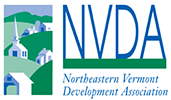Transportation Legislation
If our region is to be successful, it needs targeted growth, interaction, and cooperation with its neighbors. But how exactly should it grow? How will it cooperate? If we allow growth to occur haphazardly we may not like the results. Thinking of infrastructure as merely a way to accomplish business aims, or to simply "get there" as quickly and efficiently as possible, may mar the natural beauty that makes the Northeast Kingdom so special. Thankfully, federal legislation of the last decade has agreed with this. It has empowered us as citizens and given us an opportunity to participate in our transportation futures. We have only to participate. The future is coming, we must plan for it. Before we start, let's get our acronyms straight!
The Intermodal Surface Transportation Efficiency Act of 1991
The Intermodal Surface Transportation Act (ISTEA) or "iced tea," as it is called by most transportation professionals, changed forever the way we plan our transportation futures. ISTEA was authorized by congress for seven years, and re-authorized in 1998 as the Transportation Equity Act for the 21st Century (TEA-21). TEA-21 was re authorized as the& Safe, Accountable, Flexible, Efficient Transportation Equity Act: A Legacy for Users (SAFETEA-LU) in 2005. And We have just seen the latest federal reauthorization Moving Ahead for Progress in the Twenty First Century (MAP-21) Here are some of the key changes brought by ISTEA and carried forward through to the latest Transportation Legislation
- Required states, cities, and counties to consult citizens
- Made cleaning the air we breathe an important part of the picture
- Gave local officials--those most in touch with local needs--a stronger role.
- Recognized that transportation is more than moving cars and trucks.
- Connected transportation planning with land use.
Transportation Planning Initiative
In 1992, the State of Vermont established the Transportation Planning Initiative (TPI) as a way of bringing the visionary planning of ISTEA, TEA-21 SAFETEA-LU, and now MAP 21 to rural Vermont. It is funded from State Planning Research funds, annually in October, by the Vermont Agency of Transportation (VTrans) via grants to each of the eleven regional planning commissions (RPCs). The Northeastern Vermont Development Association (NVDA) is the planning commission for the Northeast Kingdom. The goal of the TPI is to encourage public involvement in all transportation activities. The public, through the intermediary of their Regional Planning Commissions, is invited to play a major role in determining the type and scale of improvements to be made in their region. Each year, the VTrans Planning Division contracts with each RPC to:
- Involve the public in the planning process.
- To write and/or update a regional transportation plan The regional plan is updated approximately every five years and needs to be consistent with the statewide plan.
- To review projects within VTrans Capital Budget and Program, and to identify and prioritize regional transportation needs for other projects in their region.
A major role of each RPC is to make a prioritized list of transportation needs within their region. Starting at the municipal level, towns are asked to provide input on their municipalities transportation needs. This is done primarily through the forum provide by the Transportation Advisory Committee meetings. The RPC reviews the problems or needs, ranks them in priority and recommends the most important to the VTrans Planning Division. The Planning Division, with regional participation, combines these lists into one and prioritizes it on a statewide level. The highest priority projects are forwarded to the Director of the Planning Division for authorization and finally to the Project Managers so project development may begin.
The regions, under TPI, need to submit a list of projects to the Secretary of Transportation for approval. They do not get automatic approval.

